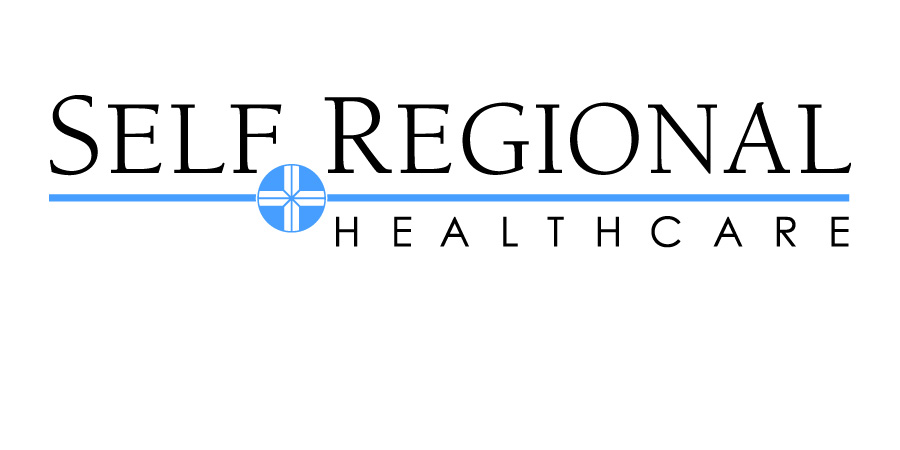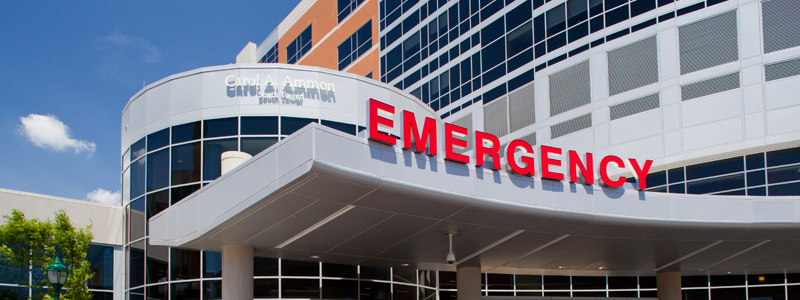Title Page
-
Conducted on
-
Prepared by
-
Location
CoP: Infection Control
-
Do you want to review "Infection Control" conditions?
482.42 Infection Control
-
A-0747 482.42 The hospital must provide a sanitary environment to avoid sources and transmission of infections and communicable diseases. There must be an active program for the prevention, control, and investigation of infections and communicable diseases.
-
Interpretive Guidelines §482.42
This regulation requires the hospital to develop, implement, and maintain an active, hospital-wide program for the prevention, control, and investigation of infections and communicable diseases. The National Institute of Allergy and Infectious Diseases defines an infectious disease as a change from a state of health to a state in which part or all of a host’s body cannot function normally because of the presence of an infectious agent or its product. An infectious agent is defined by the NIAID as a living or quasi-living organism or particle that causes an infectious disease, and includes bacteria, viruses, fungi, protozoa, helminthes, and prions. NIAID defines a communicable disease as a disease associated with an agent that can be transmitted from one host to another. (NIAID website glossary)
According to the Centers for Disease Control and Prevention (CDC), healthcare-associated infections, i.e., infections that patients acquire during the course of receiving treatment for other conditions within a healthcare setting, are one of the top ten leading causes of death in the United States. The CDC estimates that there are 1.7 million healthcare-associated infections in American hospitals each year, with 99,000 associated deaths. (CDC website, Estimates of Healthcare-Associated Infections, date last modified May 30, 2007)
The hospital must provide and maintain a sanitary environment to avoid sources and transmission of infections and communicable diseases. All areas of the hospital must be clean and sanitary. This includes all hospital units, campuses and off-site locations. The infection prevention and control program must include appropriate monitoring of housekeeping, maintenance (including repair, renovation and construction activities), and other activities to ensure that the hospital maintains a sanitary environment. Examples of areas to monitor would include: food storage, preparation, serving and dish rooms, refrigerators, ice machines, air handlers, autoclave rooms, venting systems, inpatient rooms, treatment areas, labs, waste handling, surgical areas, supply storage, equipment cleaning, etc.
The hospital’s program for prevention, control and investigation of infections and communicable diseases should be conducted in accordance with nationally recognized infection control practices or guidelines, as well as applicable regulations of other federal or state agencies. Examples of organizations that promulgate nationally recognized infection and communicable disease control guidelines, and/or recommendations include: the Centers for Disease Control and Prevention (CDC), the Association for Professionals in Infection Control and Epidemiology (APIC), the Society for Healthcare Epidemiology of America (SHEA), and the Association of periOperative Registered Nurses (AORN). The U.S. Occupational Health and Safety Administration (OSHA) also issues federal regulations applicable to infection control practices.
In order to prevent, control and investigate infections and communicable diseases, the hospital’s program must include an active surveillance component that covers both hospital patients and personnel working in the hospital. Surveillance includes infection detection, data collection and analysis, monitoring, and evaluation of preventive interventions.
The hospital must conduct surveillance on a hospital-wide basis in order to identify infectious risks or communicable disease problems at any particular location. This does not imply “total hospital surveillance,” but it does mean that hospitals must have reliable sampling or other mechanisms in place to permit identifying and monitoring infections and communicable diseases occurring throughout the hospital’s various locations or departments. The hospital must document its surveillance activities, including the measures selected for monitoring, and collection and analysis methods. Surveillance activities should be conducted in accordance with recognized infection control surveillance practices, such as, for example, those utilized by the CDC’s National Healthcare Safety Net (NHSN).
The hospital must develop and implement appropriate infection control interventions to address issues identified through its detection activities, and then monitor the effectiveness of interventions through further data collection and analysis.
The hospital’s infection prevention and control program must be integrated into its hospital-wide Quality Assurance and Performance Improvement (QAPI) program. (See 42 CFR 482.42(b)(1).)
SPECIAL CHALLENGES IN INFECTION CONTROL
MULTI-DRUG RESISTANT ORGANISMS (MDROs)
According to the Centers for Disease Control’s (CDC) publication, Management of Multi-drug Resistant Organisms in Healthcare Settings 2006, http://www.cdc.gov/ncidod/dhqp/pdf/ar/mrdoGuideline2006.pdf, MDROs are microorganisms that are resistant to one or more antimicrobial agents. Options for treating patients with MDRO infections are very limited, resulting in increased mortality, as well as increased hospital length of stay and costs. During the last several decades the prevalence of MDROs in hospitals has increased steadily. Hospitals are encouraged to have mechanisms in place for the early identification of patients with targeted MDROs prevalent in their hospital and community, and for the prevention of transmission of such MDROs. When ongoing transmission of targeted MDROs in the hospital is identified, the infection prevention and control program should use this event to identify potential breaches in infection control practice.
AMBULATORY CARE
The ambulatory care setting, including emergency departments, presents unique
challenges for infection control, because: patients remain in common areas, often for prolonged periods of time, until they can be seen by a healthcare practitioner; examination or treatment rooms are turned around quickly with minimal cleaning; and infectious patients may not be recognized immediately. Furthermore, immuno-compromised patients may receive treatments in rooms among other patients who pose risks of infection.
The hospital’s infection prevention and control program should be designed with these ambulatory care setting challenges in mind. After assessing the likely level of risk in its various ambulatory care settings, including off-site settings, a hospital might identify particular settings, such as the emergency department, where it would be appropriate to employ measures for screening individuals with potentially contagious diseases during their initial patient encounter, and taking appropriate control measures for those individuals who may present risk for the transmission of infectious agents by the airborne or droplet route. Guidelines promulgated by the CDC’s Healthcare Infection Control Practices Advisory Committee (HICPAC) are a resource for hospitals in developing their infection control program for ambulatory care. For example, when potentially infectious individuals are identified, prevention measures should include prompt physical separation wherever possible, implementation of respiratory hygiene/cough etiquette protocols, and/or appropriate isolation precautions based on the routes of transmission of the suspected infection.
COMMUNICABLE DISEASE OUTBREAKS
Community-wide outbreaks of communicable diseases (such as measles, SARS, or influenza) present many of the same issues and require many of the same considerations and strategies as other hospital infectious disease threats. If a communicable disease outbreak occurs, an understanding of the epidemiology, likely modes of transmission, and clinical course of the disease is essential for responding to and managing the event. Among the infection control issues that may need to be addressed are:
• Preventing transmission among patients, healthcare personnel, and visitors;
• Identifying persons who may be infected and exposed;
• Providing treatment or prophylaxis to large numbers of people; and
• Logistics issues (staff, medical supplies, resupply, continued operations, and capacity).
Pandemics, or very widespread and clinically serious outbreaks of an infection, present additional challenges due to the widespread effect on the availability of back-up resources that would typically be available to address an outbreak confined to a smaller geographic area. Additionally, the duration of a pandemic may present special challenges for staffing, supplies, resupply, etc. Hospitals should work with local, State, and Federal
public health agencies to identify likely communicable disease threats and develop appropriate preparedness and response strategies.
BIOTERRORISM
Healthcare facilities would confront a set of issues similar to naturally occurring communicable disease threats when dealing with a suspected bioterrorism event. The required response is likely to differ based on whether exposure is a result of a biological release or person-to-person transmission. A variety of sources offer guidance for the management of persons exposed to likely agents of bioterrorism, including Federal agency websites (e.g., http://www.ahrq.gov/prep; http://www.usamrid.army.mil/publications/index.html; http://www.bt.cdc.gov) Because of the many similarities between man-made and naturally occurring threats, an all-hazards approach to developing emergency response plans is preferred, and hospitals are encouraged to work with their State and local emergency response agencies to develop their plans.
The hospital must be in compliance with the Occupational Health and Safety Administration’s Bloodborne Pathogens regulation at 29 CFR 1910.1030.
482.42(a) Standard: Organization and Policies
-
A-0749 482.42(a) The infection control officer or officers must develop a system for identifying, reporting, investigating, and controlling infections and communicable diseases of patients and personnel.
-
Interpretive Guidelines §482.42(a)
The infection control officer or officers must develop, implement and evaluate measures governing the identification, investigation, reporting, prevention and control of infections and communicable diseases within the hospital, including both healthcare–associated infections and community-acquired infections. Infection control policies should be specific to each department, service, and location, including off-site locations, and be evaluated and revised when indicated. The successful development, implementation and evaluation of a hospital-wide infection prevention and control program requires frequent collaboration with persons administratively and clinically responsible for inpatient and outpatient departments and services, as well as, non-patient-care support staff, such as maintenance and housekeeping staff.
Implicit in the infection control officer(s)’ responsibility for measures to identify, investigate, report, prevent and control infections and communicable diseases are the following activities:
• Maintenance of a sanitary hospital environment;
• Development and implementation of infection control measures related to hospital personnel; hospital staff, for infection control purposes, includes all hospital staff, contract workers (e.g., agency nurses, housekeeping staff, etc), and volunteers;
• Mitigation of risks associated with patient infections present upon admission:
• Mitigation of risks contributing to healthcare-associated infections:
• Active surveillance;
• Monitoring compliance with all policies, procedures, protocols and other infection control program requirements;
• Program evaluation and revision of the program, when indicated;
• Coordination as required by law with federal, state, and local emergency preparedness and health authorities to address communicable disease threats, bioterrorism, and outbreaks;
• Complying with the reportable disease requirements of the local health authority;
For example, a hospital with a comprehensive hospital-wide infection control program should have and implement policies and procedures, based as much as possible on national guidelines that address the following:
• Maintenance of a sanitary physical environment:
° Ventilation and water quality control issues, including measures taken to maintain a safe environment during internal or external construction/renovation;
° Maintaining safe air handling systems in areas of special ventilation, such as operating rooms, intensive care units, and airborne infection isolation rooms;
° Techniques for food sanitation;
° Techniques for cleaning and disinfecting environmental surfaces, carpeting and furniture;
° Techniques for textiles reprocessing, storage and distribution;
° Techniques for disposal of regulated and non-regulated waste; and
° Techniques for pest control.
• Hospital staff-related measures:
° Measures – and authority - for evaluating hospital staff immunization status for designated infectious diseases, as recommended by the CDC and its Advisory Committee on Immunization Practices (ACIP);
° Policies articulating the authority and circumstances under which the hospital screens hospital staff for infections likely to cause significant infectious disease or other risk to the exposed individual, and for reportable diseases, as required under local, state, or federal public health authority;
° Policies articulating when infected hospital staff are restricted from providing direct patient care and/or are required to remain away from the healthcare facility entirely;
° New employee and regular update training in preventing and controlling healthcare-associated infections and methods to prevent exposure to and transmission of infections and communicable diseases;
° Measures to evaluate staff and volunteers exposed to patients with infections and communicable disease;
• Mitigation of risks associated with patient infections present upon admission:
° Measures for the early identification of patients who require isolation in accordance with CDC guidelines;
° Appropriate use of personal protective equipment including gowns, gloves, masks and eye protection devices;
° Use and techniques for “isolation” precautions as recommended by the CDC.
• Mitigation of risks contributing to healthcare-associated infections:
° Surgery-related infection risk mitigation measures:
• Implementing appropriate prophylaxis to prevent surgical site infection (SSI), such as a protocol to assure that antibiotic prophylaxis to prevent surgical site infection for appropriate procedures is administered at the appropriate time, done with an appropriate antibiotic, and discontinued appropriately after surgery;
• Addressing aseptic technique practices used in surgery and invasive procedures performed outside the operating room, including sterilization of
instruments;
° Other hospital healthcare-associated infection risk mitigation measures:
• Promotion of hand washing hygiene among staff and employees, including utilization of alcohol-based hand sanitizers;
• Measures specific to prevention of infections caused by organisms that are antibiotic-resistant;
• Measures specific to prevention of device-associated bloodstream infection (BSI), such as a protocol for reducing infections of central venous catheters specifying aseptic precautions for line insertions, care of inserted lines, and prompt removal when a line is no longer needed;
• Measures specific to prevention of other device-associated infections, e.g., those associated with ventilators, tube feeding, indwelling urinary catheters, etc.;
• Isolation procedures and requirements for highly immuno-suppressed patients who require a protective environment.
• Care techniques for tracheostomy care, respiratory therapy, burns and other situations that reduce a patient's resistance to infection;
• Requiring disinfectants, antiseptics, and germicides to be used in accordance with the manufacturers' instructions;
• Appropriate use of facility and medical equipment, including negative and positive pressure isolation room equipment, portable air filtration equipment, treatment booths and enclosed beds, UV lights, and other equipment used to control the spread of infectious agents;
• Adherence to nationally recognized infection prevention and control precautions, such as current CDC guidelines and recommendations, for infections/communicable diseases identified as present in the hospital; and
• Educating patients, visitors, caregivers, and staff, as appropriate, about infections and communicable diseases and methods to reduce transmission in the hospital and in the community;
• Active surveillance:
° The hospital is expected to identify and track infections and communicable diseases in any of the following categories occurring throughout the hospital, whether in patients or staff (patient care staff and non-patient care staff,
including employees, contract staff and volunteers). Hospitals are not required to organize their surveillance according to these categories. The categories are:
• Healthcare-associated infections selected by the hospital’s Infection Prevention and Control Program as part of a targeted surveillance strategy based on nationally recognized guidelines and periodic risk assessment;
• Patients or staff with identified communicable diseases that local, State, or Federal health agencies require be reported;
• Patients identified by laboratory culture as colonized or infected with multi-drug-resistant organisms (MDROs), as defined by the hospital’s Infection Prevention and Control Program;
• Patients who meet CDC criteria for requiring isolation precautions (other than “Standard Precautions” or a protective environment) during their hospitalization;
• Patients or staff with signs and symptoms that have been requested be reported or recorded by local, State, or Federal health agencies; and
• Staff or patients who are known or suspected to be infected with epidemiologically-significant pathogens that are identified by the hospital or local, State, or Federal health agencies.
"For Information – Not Required/Not to be Cited"
--Many hospitals are using automated surveillance technology (AST) or “data mining” for identification and control of hospital-acquired infections (HAI) and implementation of evidence-based infection control practices. Use of AST or similar technology is encouraged in hospitals, but is not required.--
• Provisions to monitor compliance with all policies, procedures, protocols and other infection control program requirements;
• Provision for program evaluation and revision of the program, when indicated;
• Policies and procedures developed in coordination with federal, state, and local emergency preparedness and health authorities to address communicable disease threats, bioterrorism, and outbreaks; and
• Procedures for meeting the reporting requirements of the local health authority.
482.42(b) Standard: Responsibilities of Chief Executive Officer, Medical Staff, and Director of Nursing Services
-
A-0756 482.42(b) The chief executive officer, the medical staff, and the director of nursing must:<br>(1) Ensure that the hospital-wide quality assessment and performance improvement (QAPI) program and training programs address problems identified by the infection control officer or officers; and<br>(2) Be responsible for the implementation of successful corrective action plans in<br>affected problem areas.
-
Interpretive Guidelines §482.42(b)
The chief executive officer (CEO), the medical staff and the director of nursing (DON) must ensure that the hospital-wide Quality Assessment and Performance Improvement (QAPI) program and staff in-service training programs address problems identified through the infection prevention and control program.
To reflect the importance of infection control the regulations specifically require that the hospital’s QAPI and training programs must be involved in addressing problems identified by the infection control program, and hold the CEO, medical staff and DON jointly responsible for linking the infection control program with the QAPI and training programs. Requirements for the hospital’s QAPI program are found at 42 CFR 482.21.
These hospital leaders are also held explicitly responsible for implementing successful corrective action plans. In order to accomplish this, hospital leaders must monitor adherence to corrective action plans, as well as assess the effectiveness of actions taken, with implementation of revised corrective actions as needed.
Education on the principles and practices for preventing transmission of infectious agents within the hospital should be provided to anyone who has an opportunity for contact with patients or medical equipment, e.g., nursing and medical staff; therapists and technicians, such as those involved in respiratory, physical, and occupational therapy and radiology and cardiology services; phlebotomists; housekeeping and maintenance staff; volunteers; and all students and trainees in healthcare professions.










